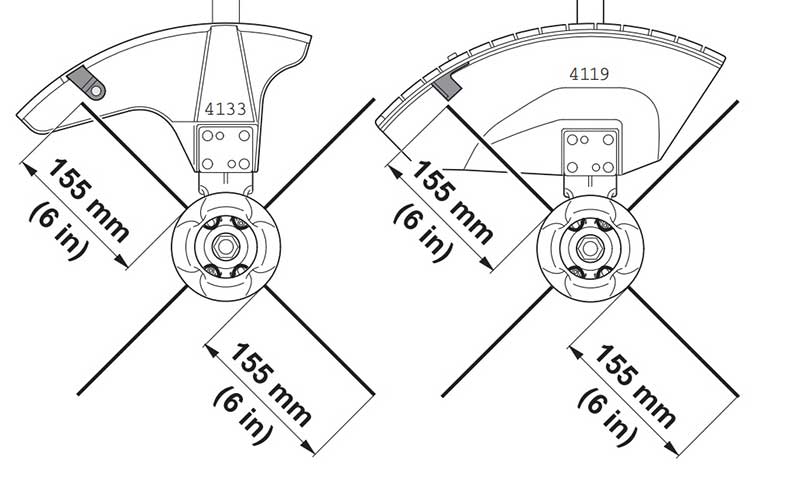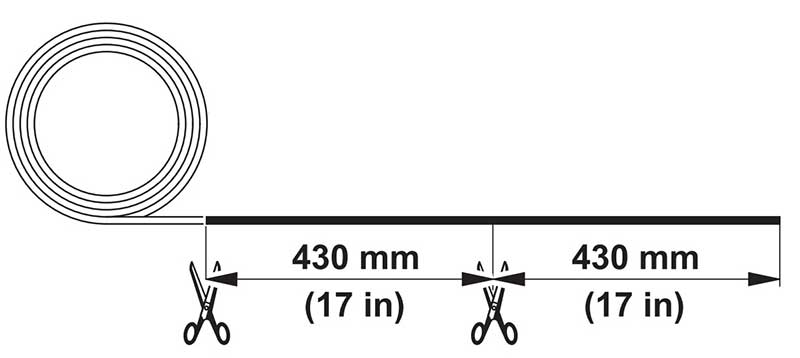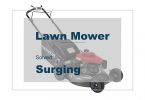When buying string trimmer lines, gardeners need to make a wise decision based on the intended purpose of their power tool.
This is because string trimmer lines or blades come in many variables. Some are made from pulverizer titanium while others consist of nylon. Both types come with different shapes, which include rounded, squared, multi-sided, twisted, and serrated.

Besides the design and materials, choosing the correct dimensions of the trimmer line is central to ensuring the effectiveness of the weed eater or trimmer. It also minimizes the chances of running out of line before completing the job.
However, some people don’t know the right size of trimmer line to use on their power tool, which is where the following guide comes in handy.
Trimmer Line Thickness
The right diameter of a trimmer line is largely dependent on:
- Different application requirements
- Size of the lawn
- Brand & Model of Trimmer
As a general rule of thumb, the more robust the grass or weed, the thicker the trimmer line should be. As such, before purchasing any trimmer line, check and see which size is capable of handling the different types of weeds and grass.
Generally, there are three main diameter sizes of trimmer lines. These include:
- 0.065 To 0.080 Inches or 1.65 To 2.03 mm CHECK PRICE
Trimmer lines whose diameter size ranges between 0.065 and 0.080 are ideal for trimming young, soft grass and lighter weeds. They are also suitable for small cutting jobs around the house and whacking weed from driveways and walkways.
- 0.080 To 0.110 Inches or 2.03 To 2.8 mm CHECK PRICE
Trimmers with this size are ideal for moderate jobs. They are the best choice for homes with large front or back lawns or gardens with over grown weed that have thick stems. These lines may also use for light commercial application.
- 0.110 Inches or 2.8 mm and Above CHECK PRICE
These trimmer lines are excellent choices for vast spaces requiring a lot of trimming and commercial use.
Such include large yards and gardens like those found in large estates or even golf courses. They are also best used for heavy commercial applications or on lawns with tough grass and woody shrubs.
Note: Before choosing a certain line dimension for the weed trimmer, check to see what size of your power tool can handle. In general, weed eaters or timmers with a higher voltage can efficiently handle lines with a thicker diameter. Conversely, those with a lower voltage work better with medium or small-sized trimmer lines. As a general rule of thumb, users should refer to the manual book provided by the manufacturer before making a decision. They may also go for weed eaters that support differently sized trimmer heads.
The Length of a Trimmer Line
There’s probably nothing more frustrating than running out of trimmer line before getting the job done. This can be quite infuriating not to mention a huge waste of time.
This is particularly true when handling large yards or lawns that require frequent trimming. Luckily, such an instance can be avoided by using a lengthy trimmer line. Usually, the size of the trimmer line depends on the size of the spool fitted on the weed eater. However, some models do not allow spools, which means you will have to change line every once awhile.
A long trimmer line allows the users to work on their yard consistently without having to get a replacement line and wind it down the spool.

Picture Showcases: Maximum Line Length of 6in or until safety guard limit on Stihl Trimmers

Picture Showcases: Cut lengths for Stihl Trimmers
Note: Depending on the brand and model, you may replace small spools with larger ones to be able to use longer trimmer lines.
The Bottom Line
Trimmer line diameters range between three main categories. Those with the smallest diameter are best used to handle light jobs while thicker ones are excellent for common home applications and light commercial use.
On the other hand, trimmers with large diameters are best used to handle tough jobs like trimming woody shrubs and thick grass. Expansive trimming jobs also require large spools as they support longer trimmer lines.






